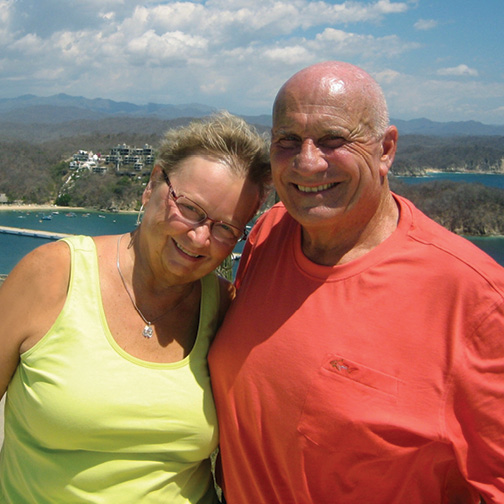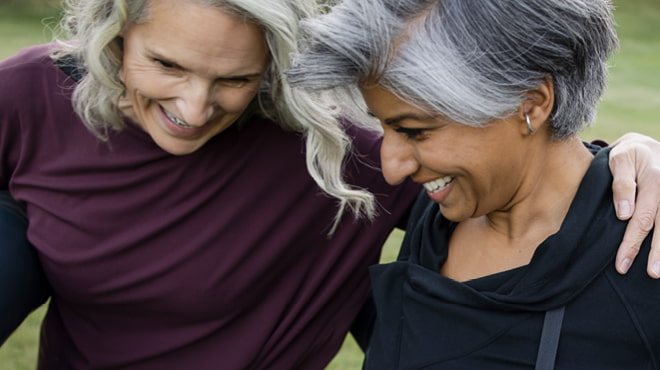Recent Posts
-

-
 Patient StoriesA lifesaver saved: An EMS veteran’s journey from rescue to recoveryNovember 14, 2025
Patient StoriesA lifesaver saved: An EMS veteran’s journey from rescue to recoveryNovember 14, 2025 -

Home care aids recovery after heart-assist implant surgery

After all he’s been through over the last year, Mat Walker takes little for granted. Watching wildlife in his yard, being able to eat solid food again and walking to his mailbox and back all mean a little more to the 76-year-old Rice Lake, Wisconsin, man than they ever did before.
That will happen when you’re on the brink of never experiencing them again.
Mat, a retired mechanic, has lived with heart problems since 1989. His heart was failing, but with medication and routine medical evaluations, he enjoyed a normal life with few limitations. He was able to hunt, fish, spend time with his family and work in his garage.
But in August 2017, his heart failure took a sudden turn for the worse. He felt weak, had trouble breathing, and his legs and ankles swelled to the point that he could hardly get his shoes on. Adjusting his medication didn’t work and the emergency care team made the call to have him transported to Mayo Clinic Health System in Eau Claire, where he spent the next two weeks under close surveillance.
His condition continued to deteriorate and he was flown to Mayo Clinic’s Rochester campus where his care team would explore whether or not he was a candidate for a left ventricular assist device (LVAD). The device is an implantable mechanical pump to help pump blood from the lower left side of the heart to the rest of the body.
FIGHTING FOR LIFE
The stakes were high. Nearing the last stage of heart failure, the only other alternative was to return home with hospice services. Neither he nor his wife, Sue, were ready for that.
Mat passed all the tests, and was cleared for open-heart surgery and placement of his LVAD in September 2017. But his struggle was not over. Mat tolerated the surgery but later experienced a stroke, blood clot, and gastrointestinal and brain bleeds. He fell into a coma and almost died.
Mat’s story didn’t end there. He recovered, and more than three months later was released from the hospital in December 2017.
“He’s a fighter and didn’t give up,” says Sue.
Still too weak to come home, Mat was transferred to Mayo Post Acute Care in Barron. He received speech therapy twice a day, and occupational and physical therapy. Because he had a breathing tube, feeding tube and trach tube in place for so long, the muscles in his throat needed ample time to recover. It took a full seven months for him to be able to eat through his mouth again.
Mat went home in February with the assistance of home health services from Mayo Clinic Health System. His team included a skilled nurse, physical therapist, occupational therapist, speech-language pathologist and dietitian. Together, they developed a short-term plan of care to help him recover and return to a maximum level of function.
“They were great — I can’t emphasize that enough,” recalls Sue, mentioning how much more comfortable she felt bringing her husband home with home care in their corner. “They had quite the team, and I felt like anytime I needed someone to talk to, I could call 24/7.”
Amy Anderson, a Home Health & Hospice physical therapist, worked with Mat during the six months he received services. Initially, he was quite weak and extremely limited with his mobility. He required assistance to get up from a chair, get into bed and walk down the hall. The team set step-by-step goals, and he began to progress. The improvements were slow at first — getting up out of a chair with his wife by his side but not helping him — and eventually larger, such as walking independently up and down the four steps to get in and out of his home.
Most patients receive home care services for less than two months, but Mat required more recovery than most others. Amy marvels at how far he’s come.
“At first when we met him, he was quite weak and unsure of himself,” she says. “He was very focused on his limitations versus his abilities and couldn’t see the light at the end of the tunnel. As we started working with him, you could see him gaining confidence.”
BACK IN THE BELOVED GARAGE
One of Mat’s biggest goals was to be able to spend time in the garage where he kept his tools and an old car.
“We could just see the light come on when, all of the sudden, he could walk down the steps and do something that was extremely important to him,” Amy says.
Mat remembers little from the ordeal but says he feels “great, just super” today. He still uses a walker in the house for balance but is doing well overall. He says words can’t express the gratitude he feels toward his medical team for getting him through his crisis and back onto his feet.
Sue, who remembers every frightening step in vivid detail, also is extremely appreciative.
“I just want to thank all the doctors and nurses that helped Mat through this and, of course, the LVAD team,” she says. “He’s just happy to be home and enjoying life.”
Amy notes how rewarding it was to play a part in his rehabilitation.
“Out of all the patients we see, this story will always stick out in my mind,” she says. “You always hear about the collaboration of Mayo Clinic. Truly, between surgery in Rochester and Mayo Post Acute Care in Barron, his visits to the Cardiac Center in Eau Claire, home care visits, going to outpatient physical therapy at Mayo Clinic Health System in Rice Lake with Laura Czyscon, you can really see how we all worked together in transitioning his care to what the most appropriate level is at any given time.”


